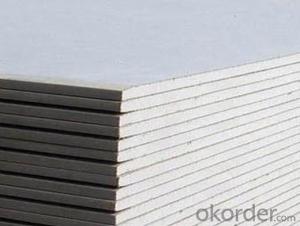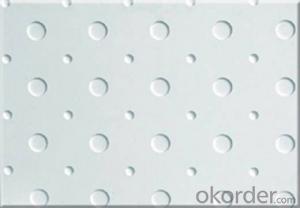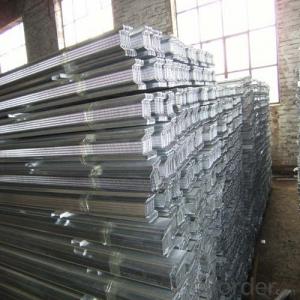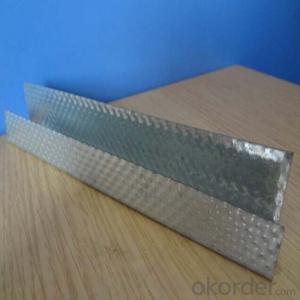Aluminum Plate Material
Aluminum Plate Material Related Searches
Led Light Bulbs For Ceiling Fixtures Shiny Or Dull Side Of Aluminum Foil For Cooking Decorative Ceiling Plate For Light Fixture 42 In Ceiling Fan With Light Ceiling Plate For Hanging Light Aluminum Foil For Ceiling Hole Saw For Aluminum Plate Aluminum Tread Plate For Trailer Bow Plate For Aluminum Boat Aluminum Foil For Grow RoomHot Searches
Steel Mesh Panels For Sale Cheap High Tea Sets For Sale Cheap Solar Cells For Sale Q Cells Solar Panels For Sale Used Foam Board Insulation For Sale Welded Wire Panels For Sale Types Of Temporary Side Panels For Cement Deck Fiberglass Panels For Sale Magnesium Oxide Board For Sale Hdf Board For Sale sintra board for sale Cheap Mini Laptops For Sale Plywood For Sale Cheap Sandwich Panels For Sale resin panels for sale Cheap Washers For Sale Cheap Tall Vases For Sale Eps Panels For Sale Air Conditioner For Cheap Prices Gypsum Board Price Per Sheet In IndiaAluminum Plate Material Supplier & Manufacturer from China
Okorder.com is a professional Aluminum Plate Material supplier & manufacturer, offers integrated one-stop services including real-time quoting and online cargo tracking. We are funded by CNBM Group, a Fortune 500 enterprise and the largest Aluminum Plate Material firm in China.Hot Products
FAQ
- Yes, aluminum sheets can be used for automotive heat shields. Aluminum is a popular choice for heat shields in the automotive industry due to its excellent thermal conductivity and heat resistance properties. It has a high melting point and can effectively dissipate heat, making it suitable for protecting various components from excessive heat exposure. Additionally, aluminum sheets are lightweight and easy to shape, allowing for custom designs to fit specific automotive applications. Overall, aluminum sheets are a reliable and cost-effective option for automotive heat shields.
- Yes, 101 aluminum sheets can be used in the production of musical instruments. Aluminum is a lightweight and durable metal that is commonly used in the manufacturing of various musical instruments. It offers good resonating properties and can produce a bright and clear sound. Additionally, aluminum is highly malleable, allowing it to be easily shaped and formed into different components of musical instruments such as bodies, frames, or keys. Therefore, 101 aluminum sheets can certainly be utilized in the production of musical instruments, contributing to their overall quality and performance.
- So my new farrier comes out tomorrow and charges $20 more for aluminum shoes and I was wondering why that is? Is one better than the other? My horse is a TB hunter jumper. Tell me what you think :)
- According to my farrier, aluminum shoes are harder to put on because they are softer than steel and they are easier to damage while shaping them for your horse's foot. He also says that aluminum shoes wear down faster than steel shoes, so if you are working a horse in a highly competitive sport, it's better to put steel shoes on. Most racehorses have aluminum shoes put on simply because they're lighter, but if you don't want to be changing the shoes every two weeks, or can't afford to, then steel shoes are the best way to go.
- Aluminum sheet offers a variety of surface treatments, each with its own benefits and purposes. Anodizing, painting, powder coating, and polishing are some of the most commonly used methods. Anodizing, for instance, involves an electrochemical process that develops a protective oxide layer on the aluminum sheet's surface. This treatment not only enhances its corrosion resistance but also adds an attractive finish. Anodized aluminum can be dyed in different colors, making it a popular choice for architectural and decorative uses. Painting, on the other hand, is a widely employed surface treatment for aluminum sheet. It entails applying a liquid paint coating to the surface, providing protection and aesthetic appeal. Painted aluminum sheets are frequently utilized in building facades, automotive parts, and other applications where a vibrant and long-lasting finish is desired. Powder coating, a dry finishing process, is also popular. It involves electrostatically applying a powder coating to the aluminum sheet and then curing it under heat. This treatment offers excellent corrosion resistance, durability, and a wide range of color options. Powder-coated aluminum sheets are often found in outdoor furniture, commercial signage, and architectural applications. For a smooth and shiny finish, polishing is a mechanical surface treatment that involves grinding or buffing the aluminum sheet. This treatment is commonly used for decorative purposes in jewelry, automotive trim, and upscale appliances. Choosing the right surface treatment for aluminum sheet depends on the intended application and desired appearance. Each treatment has unique properties and characteristics, so consulting with experts or professionals in the field is highly recommended to determine the most suitable option for specific requirements.
- In order to avoid discoloration of aluminum sheets, there are a few steps that can be taken. First and foremost, it is crucial to regularly clean the aluminum sheets to eliminate any dirt or debris that may potentially cause discoloration. Utilize a mild detergent or a specialized aluminum cleaner, along with a soft cloth or sponge, to gently scrub the surface. It is advisable to refrain from using abrasive cleaners or scrubbing pads, as they have the potential to scratch the surface and increase the likelihood of discoloration. Secondly, it is essential to thoroughly rinse the sheets after cleaning to eradicate any residue from the cleaning products. Residual chemicals can react with the aluminum and result in discoloration over time. Another preventive measure entails applying a protective coating or sealant on the aluminum sheets. This can establish a barrier between the metal and the surrounding environment, thus preventing oxidation and discoloration. There are diverse types of protective coatings available, such as clear lacquers or anodizing treatments, which can enhance the durability and appearance of the aluminum sheets. Moreover, proper storage of the aluminum sheets is paramount to minimizing exposure to moisture, humidity, and extreme temperature fluctuations. Moisture can expedite the oxidation process and lead to discoloration. It is recommended to store the sheets in a dry and well-ventilated area, away from direct sunlight or sources of heat. Consistent maintenance is vital to prevent discoloration. Periodically inspect the aluminum sheets for any indications of discoloration or damage, and promptly address any issues that arise. By adhering to these preventive measures, the aesthetic appeal and longevity of aluminum sheets can be maintained.
- In order to bend aluminum sheets, one must have a few tools and employ the correct technique. Here is a step-by-step manual on how to bend aluminum sheets: 1. Acquire the necessary tools: You will require a metal brake, which is a specialized tool intended for bending metal sheets, as well as a straight edge such as a ruler or a piece of wood. 2. Measure and indicate the bending line: Determine the desired location for the bend on the aluminum sheet and employ a measuring tape to mark the line. Ensure that the line is straight and precise. 3. Position the aluminum sheet: Place the aluminum sheet onto the metal brake, aligning the marked bending line with the brake's edge. Ensure that the sheet is secure and will not shift during the bending process. 4. Adjust the metal brake: Depending on the thickness of the aluminum sheet, modify the metal brake to the appropriate bending angle. This can typically be accomplished by loosening or tightening the clamps or screws on the brake. 5. Bend the aluminum sheet: Apply pressure to the metal brake, gradually bending the aluminum sheet along the marked bending line. Begin from one end and progress towards the other, ensuring a smooth and uniform bend. 6. Inspect the bend: Following the bending process, double-check the angle and alignment to confirm that it corresponds to your desired specifications. If necessary, make any necessary adjustments before proceeding. 7. Repeat if necessary: If you require multiple bends on the aluminum sheet, repeat the process for each one. Take your time and exercise patience in order to achieve the desired outcomes. It is important to note that the thickness and type of aluminum sheet may necessitate modifications to the bending technique. Thicker sheets may require increased pressure or multiple passes to achieve the desired bend. Always refer to the specific instructions and recommendations provided by the manufacturer of your metal brake for optimal results.
- Yes, aluminum sheets are suitable for lighting fixtures. Aluminum is a versatile and durable material that is commonly used in the manufacturing of lighting fixtures. It offers several advantages that make it a popular choice for this purpose. Firstly, aluminum is lightweight, which makes it easier to handle and install lighting fixtures. It is also highly corrosion-resistant, ensuring that the fixtures can withstand various environmental conditions without deteriorating or rusting over time. Additionally, aluminum has excellent thermal conductivity, allowing it to efficiently dissipate heat generated by the lighting fixtures, which helps in preventing overheating and prolonging their lifespan. Moreover, aluminum can be easily shaped and formed into various designs, making it ideal for creating aesthetically pleasing lighting fixtures. It can be extruded, rolled, or stamped to achieve different shapes and sizes, allowing for a wide range of creative possibilities. Furthermore, aluminum is a cost-effective material compared to other metals commonly used in lighting fixtures, such as brass or copper. It is readily available and has a lower price point, making it a more affordable option for both manufacturers and consumers. In summary, aluminum sheets are indeed suitable for lighting fixtures due to their lightweight nature, corrosion resistance, excellent thermal conductivity, versatility in design, and cost-effectiveness.















































